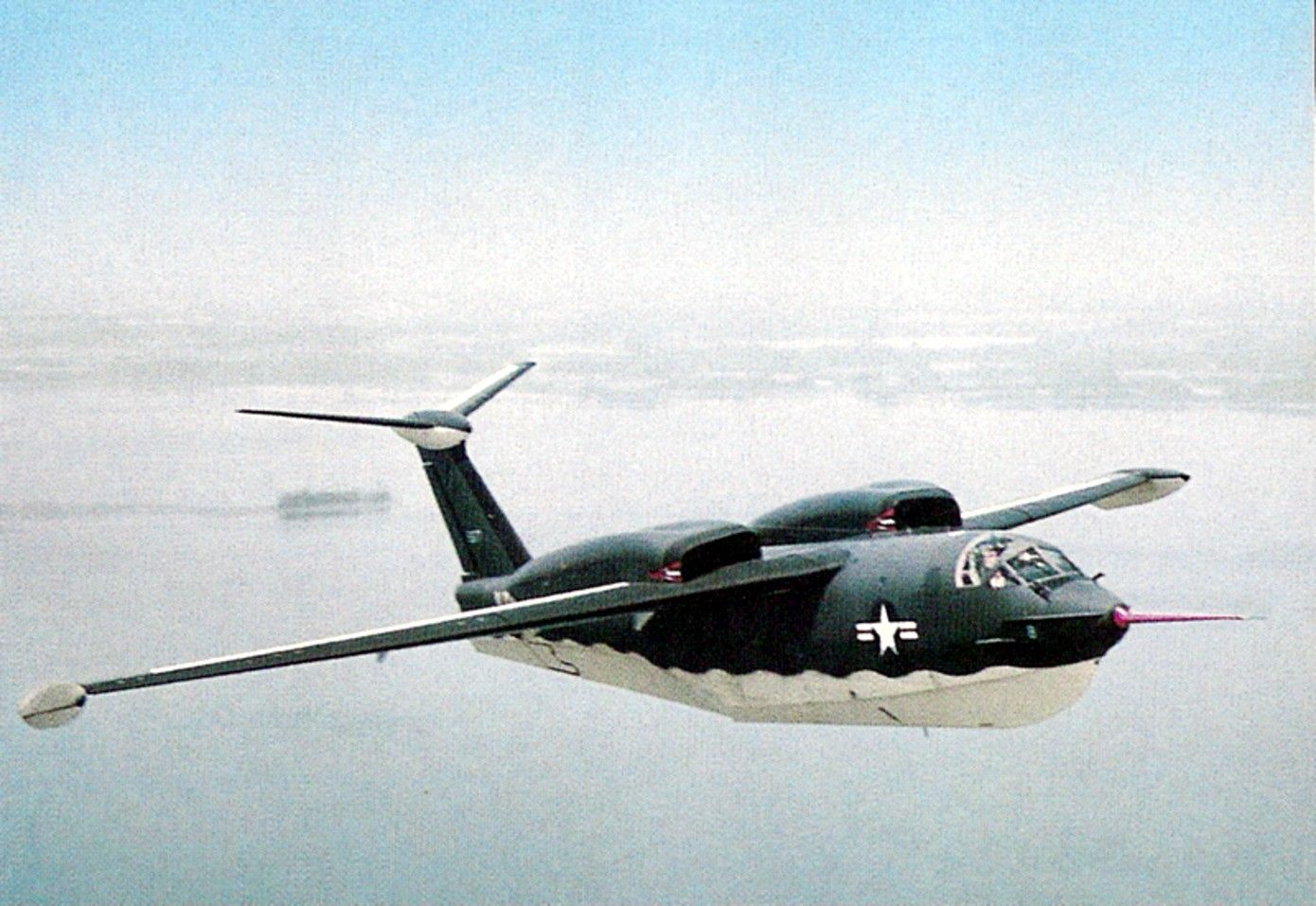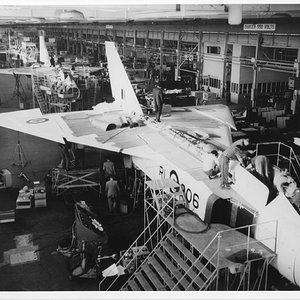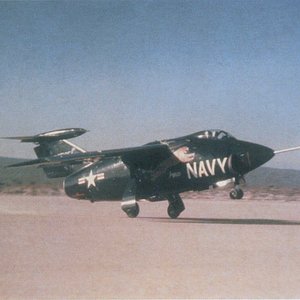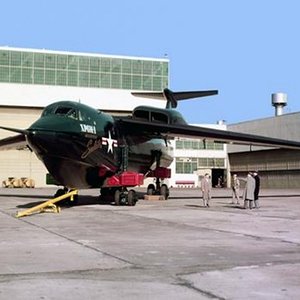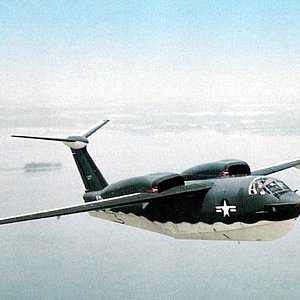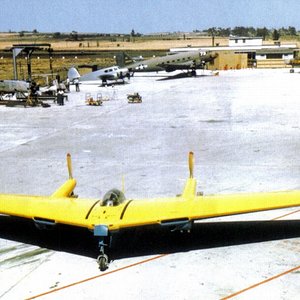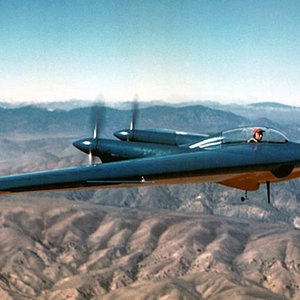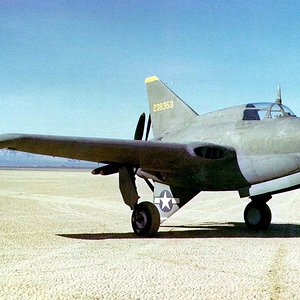Navigation
Install the app
How to install the app on iOS
Follow along with the video below to see how to install our site as a web app on your home screen.
Note: This feature may not be available in some browsers.
More options
You are using an out of date browser. It may not display this or other websites correctly.
You should upgrade or use an alternative browser.
You should upgrade or use an alternative browser.
Design and development
In the immediate postwar defense climate, the United States Air Force's Strategic Air Command was the lynchpin of the United States' security as the sole means of delivery of the nation's nuclear arsenal. The Navy saw its strategic role being eclipsed by the Air Force and knew both its prestige and budgets were at stake. Its first attempt, the USS United States, a large "super carrier" to launch Navy strategic bombers from, having been a victim of budget cuts, the Navy chose instead to create a "Seaplane Striking Force" useful for both nuclear and conventional warfare, including reconnaissance and minelaying. Groups of these planes, supported by seaplane tenders or even special submarines, could be located closer to the enemy, and as mobile targets would be harder to neutralize.
The requirement, issued in April 1951, was for a seaplane able to carry 30,000 lb (13,600 kg) of bombs to a target 1,500 miles (2,400 km) away from its aquatic base. The aircraft had to be capable of a low altitude attack run at Mach 0.9 (1,100 km/h), which required an extremely capable aircraft. Both Convair and Martin submitted proposals, and the Martin one was chosen as more promising. An order for two prototypes was issued, which was projected to lead to six pre-production aircraft and a projected twenty-four production planes.
Originally the plane was to have a Curtiss-Wright turbo-ramjet engine,[2][3] but this ran into problems and a more conventional Allison J71-A-4 turbojet was employed, fitted in pairs in overwing pods to keep the spray out of the intakes. Wings swept at 40° were used; they displayed a notable anhedral (downward slope to the tip) and were designed with tip tanks that doubled as floats on the water. Many features of Martin's XB-51 bomber prototype were used, including an all-flying "T" tail and a rotating bomb bay—pneumatically sealed against seawater in the P6M.
Specifications (P6M-2)
General characteristics
Crew: 4
Length: 134 ft 0 in (40.84 m)
Wingspan: 102 ft 11 in (31.37 m)
Height: 32 ft 5 in (9.88 m)
Wing area: 1,900 ft² (180 m²)
Empty weight: 91,300 lb (41,400 kg)
Loaded weight: 120,000 lb (54,000 kg)
Max. takeoff weight: 176,400 lb (80,000 kg)
Powerplant: 4 × Pratt & Whitney J75-P-2 turbojets, 17,500 lbf (77.8 kN) each
Performance
Maximum speed: 550 kt (630 mph, 1,010 km/h)
Range: 1,700 nm (2,000 mi, 3,200 km)
Service ceiling: 40,000 ft (12,000 m)
Rate of climb: ft/min (m/s)
Wing loading: 63 lb/ft² (310 kg/m²)
Thrust/weight: 0.58
Armament
Guns: 2× 20 mm cannon in tail turret
Bombs: 30,000 lb (14,000 kg)
In the immediate postwar defense climate, the United States Air Force's Strategic Air Command was the lynchpin of the United States' security as the sole means of delivery of the nation's nuclear arsenal. The Navy saw its strategic role being eclipsed by the Air Force and knew both its prestige and budgets were at stake. Its first attempt, the USS United States, a large "super carrier" to launch Navy strategic bombers from, having been a victim of budget cuts, the Navy chose instead to create a "Seaplane Striking Force" useful for both nuclear and conventional warfare, including reconnaissance and minelaying. Groups of these planes, supported by seaplane tenders or even special submarines, could be located closer to the enemy, and as mobile targets would be harder to neutralize.
The requirement, issued in April 1951, was for a seaplane able to carry 30,000 lb (13,600 kg) of bombs to a target 1,500 miles (2,400 km) away from its aquatic base. The aircraft had to be capable of a low altitude attack run at Mach 0.9 (1,100 km/h), which required an extremely capable aircraft. Both Convair and Martin submitted proposals, and the Martin one was chosen as more promising. An order for two prototypes was issued, which was projected to lead to six pre-production aircraft and a projected twenty-four production planes.
Originally the plane was to have a Curtiss-Wright turbo-ramjet engine,[2][3] but this ran into problems and a more conventional Allison J71-A-4 turbojet was employed, fitted in pairs in overwing pods to keep the spray out of the intakes. Wings swept at 40° were used; they displayed a notable anhedral (downward slope to the tip) and were designed with tip tanks that doubled as floats on the water. Many features of Martin's XB-51 bomber prototype were used, including an all-flying "T" tail and a rotating bomb bay—pneumatically sealed against seawater in the P6M.
Specifications (P6M-2)
General characteristics
Crew: 4
Length: 134 ft 0 in (40.84 m)
Wingspan: 102 ft 11 in (31.37 m)
Height: 32 ft 5 in (9.88 m)
Wing area: 1,900 ft² (180 m²)
Empty weight: 91,300 lb (41,400 kg)
Loaded weight: 120,000 lb (54,000 kg)
Max. takeoff weight: 176,400 lb (80,000 kg)
Powerplant: 4 × Pratt & Whitney J75-P-2 turbojets, 17,500 lbf (77.8 kN) each
Performance
Maximum speed: 550 kt (630 mph, 1,010 km/h)
Range: 1,700 nm (2,000 mi, 3,200 km)
Service ceiling: 40,000 ft (12,000 m)
Rate of climb: ft/min (m/s)
Wing loading: 63 lb/ft² (310 kg/m²)
Thrust/weight: 0.58
Armament
Guns: 2× 20 mm cannon in tail turret
Bombs: 30,000 lb (14,000 kg)

